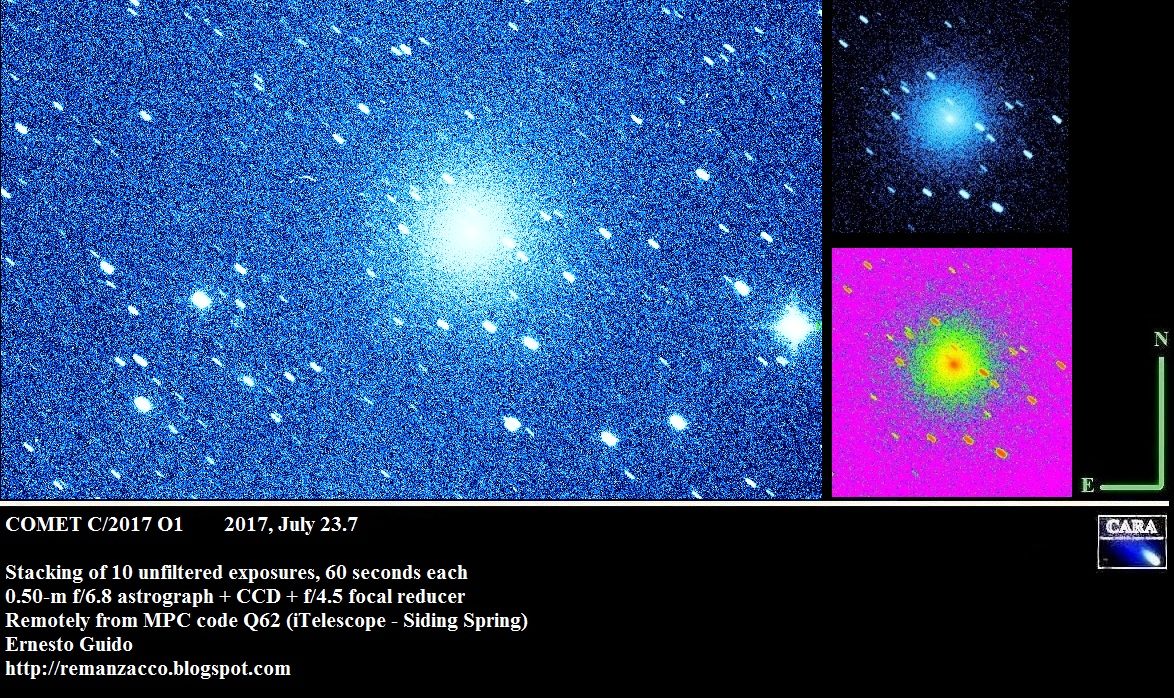CBET nr. 4414, issued on 2017, July 24, announces the discovery of a comet (magnitude ~15.3) in the course of the "
All-Sky Automated Survey for Supernovae" (
ASASSN) program, from images taken with the 14-cm "Cassius" survey telescope at Cerro Tololo on July 19.32 UT.
The new comet has been designated C/2017 O1.I performed follow-up measurements of this object, while it was still on the neocp. Stacking of 10 unfiltered exposures, 60 seconds each, obtained remotely on 2017, July 23.7 from Q62 (
iTelescope network) through 0.50-m f/6.8 astrograph + CCD + f/4.5 focal reducer, shows that this object is a comet with a sharp central condensation surrounded by diffuse coma about 3 arcmins in diameter.
My confirmation image (click on it for a bigger version)

© Remanzacco Blogspot
Below you can see the discovery image by ASASSN survey
Comment: This is the third fireball recorded over Spain in the past 11 days: